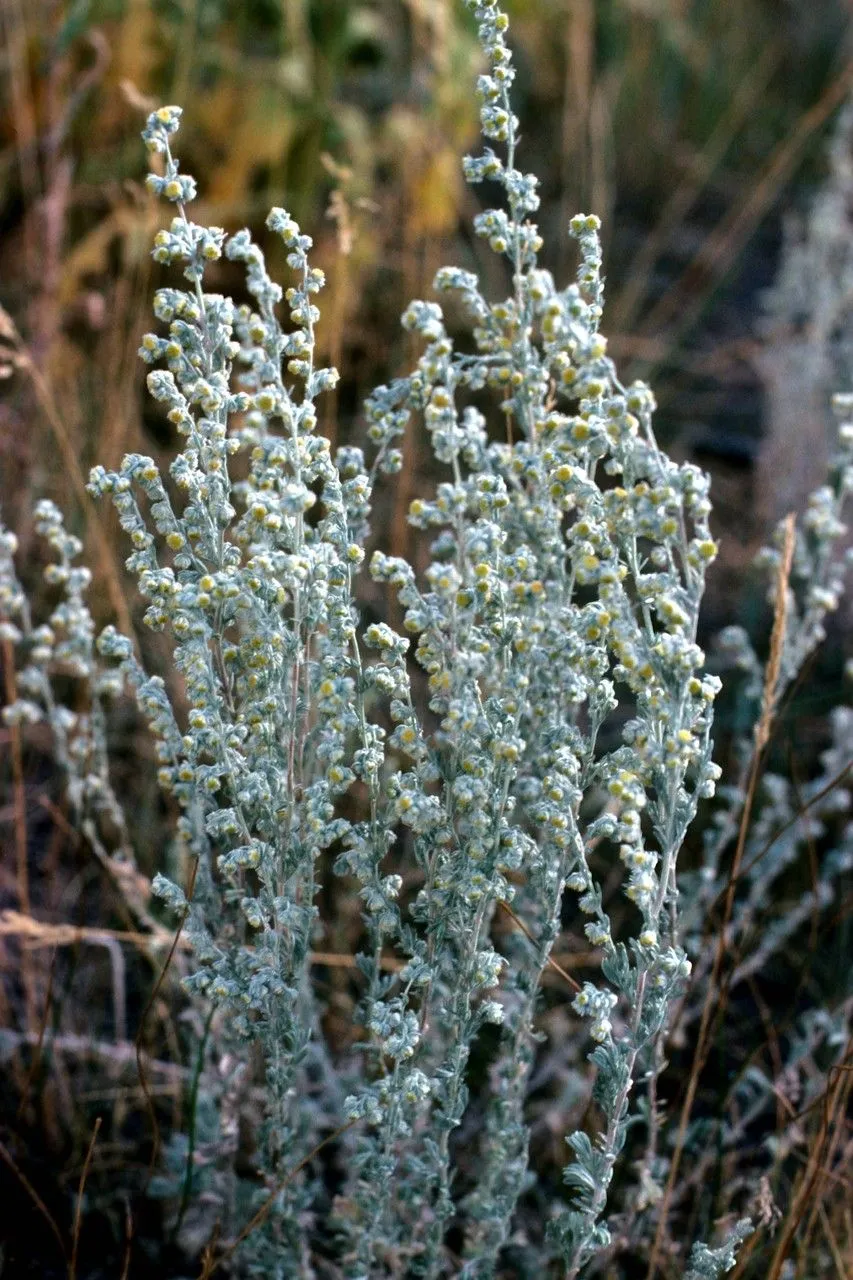
Author: Willd.
Bibliography: Sp. Pl., ed. 4, 3: 1838 (1803)
Year: 1803
Status: accepted
Rank: species
Genus: Artemisia
Vegetable: False
Observations: E. Europe to Temp. Asia, N. America
Fringed-sage, scientifically known as Artemisia frigida, is a notable species within the family Asteraceae. Initially recorded in 1803 in the fourth edition of “Species Plantarum” by Willdenow, this plant has since fascinated botanists and plant enthusiasts alike.
Artemisia frigida thrives across diverse geographic regions, predominantly from Eastern Europe to temperate zones of Asia, and it has also established itself in North America. This extensive range underscores its adaptability to a variety of climatic conditions and terrain.
Characterized by its finely divided, delicate leaves, Fringed-sage exudes an aromatic scent that is both distinctive and pleasant. The plant’s foliage is soft and feathery in texture, often exhibiting a light green to silvery hue, which enhances its visual appeal. These features not only contribute to its aesthetic value but also play a role in its survival, as the fine texture reduces water loss in arid environments.
The ecological significance of Artemisia frigida is profound. In its native habitats, it contributes to the stabilization of soil, preventing erosion with its spreading root system. Furthermore, it provides forage for wildlife, particularly in the harsher climates where other vegetation may be sparse.
Apart from its ecological role, Fringed-sage has cultural and medicinal importance. Traditionally, various indigenous cultures have utilized parts of the plant for its purported health benefits, leveraging its natural compounds for medicinal purposes. In landscape gardening, it is prized for its hardy nature and ability to thrive in poor soils, making it an excellent choice for xeriscaping and other sustainable gardening practices.
Overall, Fringed-sage is a remarkable plant that combines beauty, resilience, and utility, embodying the intricate balance of form and function in the natural world. Whether appreciated for its ecological contributions, its role in traditional medicine, or its ornamental value, Artemisia frigida holds a special place among the diverse flora of its widespread habitats.
Fra: armoise douce
Eng: estafiata, fringed-sage, prairie sagewort, wormwood-sage, prairie sagebrush, fringed sage, fringed sagewort, pasture sage
Swe: ismalört
En: Fringed-sage, Prairie sagewort, Estafiata, Wormwood-sage, Fringed sagebrush, Pasture Sage, FRINGED SAGEWORT, He’évánó’êstse, Prairie sagebrush, Fringed sage
Bg: Студенолюбив пелин
Zh: 冷蒿
Cr: Mostowiyikwaskwa
Fr: Armoise douce
Nv: Tóikałí
Fa: علف جگن دشتی
Pl: Bylica frędzlasta
Sv: Ismalört
Zh-tw: 冷蒿
Taken Jan 1, 1900 by EOL − WVU Herbarium (cc-by-nc-sa)
Taken Jan 1, 1900 by EOL − WVU Herbarium (cc-by-nc-sa)
Taken Sep 16, 2017 by Tela Botanica − Alain Bigou (cc-by-sa)
Taken Jun 2, 2013 by EOL − Peter Nelson (cc-by-nc)
Taken Jan 1, 1900 by EOL − Ripley, J.D. (cc-by-nc-sa)
Taken Jul 3, 2021 by Autumnau (cc-by-sa)
Taken Jul 18, 2021 by Abby Longworth (cc-by-sa)
Taken May 20, 2022 by Christine Evans (cc-by-sa)
Taken Nov 8, 2021 by Eric Le5 (cc-by-sa)
Taken Apr 9, 2022 by Crystal Kennedy (cc-by-sa)
Taken Sep 6, 2019 by Scarlett & Ashley Sloman (cc-by-sa)
Taken May 24, 2020 by Xanthe Dick (cc-by-sa)
Taken May 24, 2020 by Xanthe Dick (cc-by-sa)
Taken Sep 14, 2022 by Blue Bottle (cc-by-sa)
Taken May 12, 2022 by Blue Bottle (cc-by-sa)
© copyright of the Board of Trustees of the Royal Botanic Gardens, Kew.
Growth form: Rhizomatous
Growth habit: Subshrub
Growth rate: Rapid
Ph maximum: 9.0
Ph minimum: 7.0
Family: Myrtaceae Author: (F.Muell.) K.D.Hill & L.A.S.Johnson Bibliography: Telopea 6: 402 (1995) Year: 1995 Status:…
Family: Rubiaceae Author: Pierre ex A.Froehner Bibliography: Notizbl. Bot. Gart. Berlin-Dahlem 1: 237 (1897) Year:…
Family: Sapindaceae Author: Koidz. Bibliography: J. Coll. Sci. Imp. Univ. Tokyo 32(1): 38 (1911) Year:…
Family: Asteraceae Author: A.Gray Bibliography: Pacif. Railr. Rep.: 107 (1857) Year: 1857 Status: accepted Rank:…
Family: Fabaceae Author: Medik. Bibliography: Vorles. Churpfälz. Phys.-Ökon. Ges. 2: 398 (1787) Year: 1787 Status:…
Family: Aspleniaceae Author: (Cav.) Alston Bibliography: Bull. Misc. Inform. Kew 1932: 309 (1932) Year: 1932…